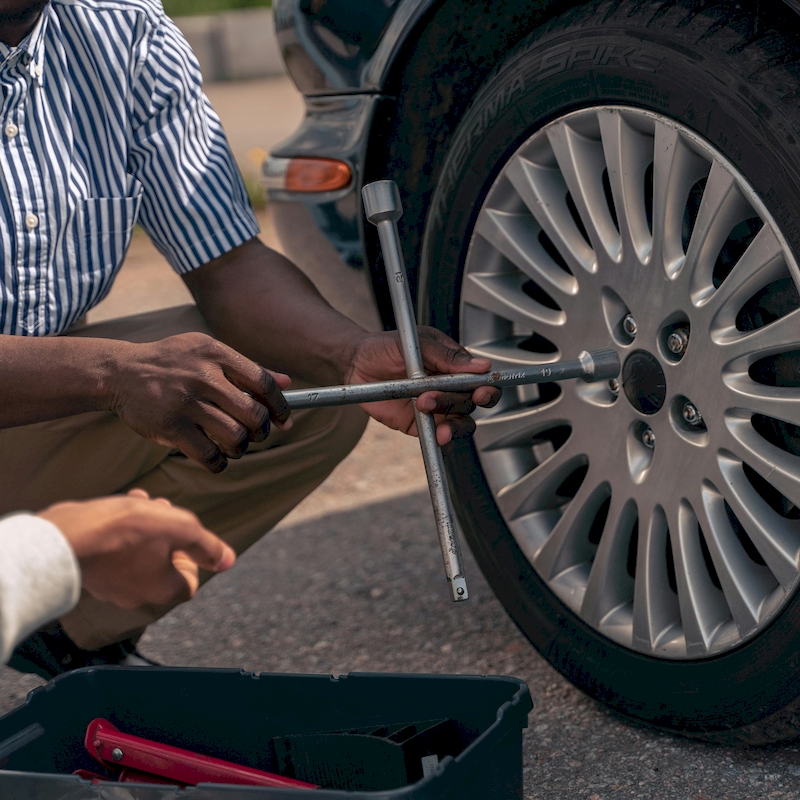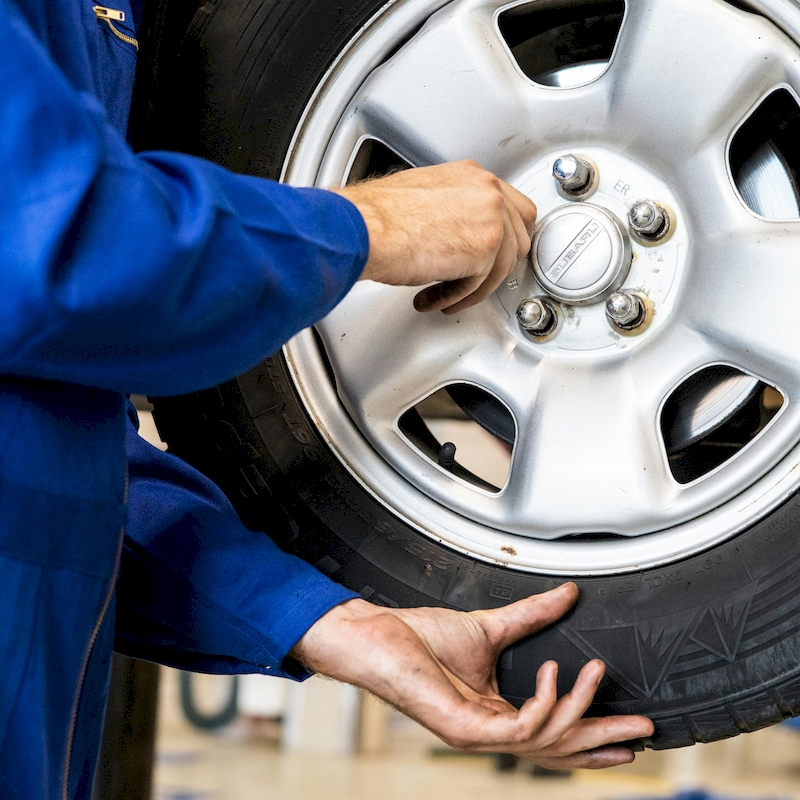Maintaining your vehicle is essential for ensuring safety, performance, and longevity on the road, and one critical aspect of vehicle maintenance is tire care. When it comes to tires, many drivers may have heard the term “rotating tires,” but what does rotating tires mean exactly? In simple terms, rotating tires refers to the practice of changing the position of the tires on your vehicle to promote even wear. Over time, tires wear out differently based on their position, driving habits, and vehicle alignment. For instance, the front tires may wear faster than the rear tires due to steering and weight distribution. By regularly rotating your tires, you can not only extend their lifespan but also enhance the comfort and performance of your vehicle. In this comprehensive guide, we will explore the concept of tire rotation, its importance, the methods employed, recommended schedules, and everything else you need to know to optimize your tire maintenance routine. Understanding what rotating tires means and implementing it into your car care regimen can lead to safer driving experiences and improved vehicle performance.
Understanding Tire Wear Patterns
To grasp the significance of rotating tires, it’s essential to understand how and why tires wear differently over time. Various factors influence tire wear, including driving habits, road conditions, and the vehicle’s alignment.
Types of Tire Wear
- Uniform Wear: This is ideal wear, where the entire tread wears down evenly across the tire. Uniform wear usually indicates proper tire balance and alignment.
- Edge Wear: When the outside or inside edges of the tire tread wear down more quickly than the center, this can indicate under-inflation or improper alignment. Edge wear can negatively impact handling.
- Center Wear: If the tread in the center of the tire wears faster than the edges, it can suggest over-inflation. Center wear can lead to reduced traction and a loss of control during maneuvers.
- Cup Wear: This type of wear creates a wavy or scalloped pattern on the tread. Cup wear can be caused by issues with suspension alignment or improper balancing.
Causes of Uneven Tire Wear
Understanding the causes of uneven tire wear is key to recognizing the need for tire rotation. Common factors include:
- Driving Habits: Aggressive acceleration, hard braking, and sharp cornering can increase wear on specific tires.
- Road Conditions: Frequent driving on rough or unpaved roads can exacerbate tire wear.
- Vehicle Alignment: Misalignment can lead to uneven forces on the tires, causing faster wear on one side.
- Weight Distribution: Vehicles carrying heavy loads or frequent passengers on one side can experience accelerated wear.
Benefits of Rotating Tires
Knowing what does rotating tires mean is essential, but understanding its benefits can motivate car owners to make it a regular part of their maintenance routine. Here are the primary benefits:
Extended Tire Lifespan
Regularly rotating your tires helps to equalize tread wear, leading to a longer lifespan for all tires. This not only saves money in the long run but also reduces the frequency of tire replacement.
Improved Vehicle Performance
Even tire wear enhances vehicle performance by providing uniform grip and handling. This stability results in better traction, particularly in wet or slippery conditions, leading to safer driving experiences.
Enhanced Fuel Efficiency
Uneven tire wear can lead to increased rolling resistance, which may reduce fuel efficiency. Rotating tires can maintain optimal performance, allowing the vehicle to move more freely and efficiently, ultimately saving on fuel costs.
Better Handling and Safety
With balanced tire performance, your vehicle will respond more predictably to steering inputs. This improved handling leads to a more comfortable driving experience and increases safety, especially during emergency maneuvers.
Reduced Risk of Blowouts
Tires in poor condition are more susceptible to blowouts, particularly if they are unevenly worn. By rotating your tires regularly, you can reduce the likelihood of blowouts resulting from weak or worn out areas on the tire.
How Often Should You Rotate Your Tires?
Scheduling regular tire rotations is a crucial aspect of maintaining your vehicle. However, many drivers are unsure about how often to rotate tires. Here are common guidelines to follow:
Manufacturer Recommendations
Consulting your vehicle’s owner’s manual is an excellent first step. Most manufacturers recommend rotating your tires every 5,000 to 7,500 miles, although this range can vary based on tire type and vehicle usage.
Driving Conditions
Adjust your rotation schedule based on your driving conditions. If you frequently drive in harsh conditions (such as off-road driving or in urban areas with heavy stop-and-go traffic), consider rotating your tires every 3,000 to 5,000 miles to compensate for wear.
Tire Type
Different tire types may have unique rotation requirements. For instance, high-performance tires may need to be rotated more frequently than all-season tires because of their softer rubber compounds, which can wear faster.
Seasonal Changes
If you switch between summer and winter tires, rotate your tires each time you change the set. Swapping tires often prevents uneven wear and prolongs the lifespans of both sets.
Methods of Tire Rotation
There are several methods for rotating tires, and the appropriate choice largely depends on the vehicle’s type (front-wheel drive, rear-wheel drive, or all-wheel drive). Here’s an overview of popular tire rotation methods:
The Standard Pattern
For most vehicles, the standard tire rotation pattern is to move the front tires to the rear while switching their sides. The rear tires move to the front, also switching sides. This method helps ensure even wear across all tires.
The X-Pattern
Often used for non-directional tires, the X-pattern involves crossing front tires to the opposite sides in the rear. Conversely, the rear tires move straight to the front, providing effective wear uniformity.
Front-to-Rear Rotation
This method is commonly employed for vehicles with directional tires, such as those designed for high-performance use. Here, front tires move directly to the rear, while the rear tires shift to the front without changing sides.
Rearward Cross Pattern
This pattern is used for rear-wheel drive or all-wheel drive vehicles. The front tires are moved to the back, and the rear tires cross to the front. This method promotes even wear by considering differences in the workloads on front versus rear tires.
Directional Tires
Directional tires are designed to rotate in a specific direction. When rotating these types of tires, it’s vital to keep them on the same side of the vehicle while moving them from front to back.
DIY Tire Rotation: Step-by-Step Guide
If you are considering rotating your tires yourself, proper knowledge and preparation are crucial. Here is a straightforward guide to help you rotate your tires safely:
Gather Necessary Tools
Before starting, ensure you have the following tools on hand:
- Jack and jack stands or ramps
- Torque wrench
- Lug wrench
- Tire pressure gauge
- Optional: chalk or markers to mark tires
1: Prepare the Vehicle
- Park on Level Ground: Choose a flat, stable surface to work on. Turn off the engine and apply the parking brake for safety.
- Loosen Lug Nuts: Using a lug wrench, loosen (but do not remove) the lug nuts on each wheel. This makes it easier to remove them after lifting the vehicle.
2: Lift the Vehicle
- Use a Jack: Position the jack under the vehicle’s lifting points as specified in the owner’s manual. Raise the vehicle until the tires are off the ground.
- Secure with Jack Stands: Once the vehicle is elevated, place jack stands beneath it for additional safety. Always ensure stability before working under or around the vehicle.
3: Remove Tires
- Remove Lug Nuts: Fully remove the loosened lug nuts and carefully take off each tire. Be mindful of each wheel’s position to ensure correct rotation.
4: Rotate Tires
- Follow Chosen Pattern: Based on the vehicle type, follow your chosen rotation pattern and place the tires accordingly.
- Inspect Each Tire: Check tread depth, look for signs of uneven wear, and ensure the tires are in good condition.
5: Reinstall Tires
- Place Tires Back On: Position each tire onto the appropriate hub and start hand-tightening the lug nuts.
- Lower the Vehicle: Slowly lower the car back to the ground.
6: Tighten Lug Nuts
- Use a Torque Wrench: After lowering the vehicle fully, use a torque wrench to tighten the lug nuts to the manufacturer’s recommended specifications. A crossed pattern is ideal for even distribution.
7: Check Tire Pressure
- Inspect and Adjust: Use a tire pressure gauge to check and adjust the pressure in each tire according to the vehicle’s specs.
Common Misconceptions About Tire Rotation
While tire rotation is a vital part of vehicle maintenance, several misconceptions may influence a driver’s perception of its importance. Here are some common myths explained:
Myth 1: Tire Rotation Is Optional
Many people believe that tire rotation is merely an optional maintenance task. However, regular rotation is critical for extending tire life and ensuring optimal handling, making it an essential practice.
Myth 2: You Don’t Need to Rotate Tires on New Vehicles
Some drivers think that new vehicles do not require tire rotation due to their relatively new condition. However, tires can wear unevenly regardless of age, so rotations should still be implemented early and consistently.
Myth 3: All Cars Rotate Tires the Same Way
Every vehicle possesses different specifications and responded differently to rotation. Understanding your vehicle’s requirements will help you apply the correct techniques and patterns for tire rotation.
Myth 4: Rotating Tires Fixes Uneven Wear
While tire rotation can help prevent uneven wear from becoming an ongoing issue, it cannot correct significant wear already present. If uneven wear is observed, it’s essential to investigate potential causes, such as misalignment or suspension issues.
Myth 5: Only Some Tires Need to Be Rotated
There is a common notion that only certain tires (front or rear) need rotation. However, for balanced performance and longevity, all tires should be rotated regularly, as every tire experiences wear from driving conditions.
Conclusion
Understanding what does rotating tires mean is crucial for any car owner looking to maintain their vehicle’s safety and performance. By regularly rotating your tires, you not only enhance their longevity but also improve your vehicle’s handling, fuel efficiency, and overall driving experience. Throughout this guide, we’ve explored the intricacies of tire rotation—including the mechanics behind tire wear, the benefits of regular maintenance, and key methods for successful execution.
Investing time and effort into maintaining your tires is a worthwhile exercise that promotes safer driving and ultimately saves you money. By adopting a proactive approach to tire care, incorporating scheduled rotations, and addressing any observed wear patterns, you can ensure that your vehicle remains in top condition for years to come.
Taking charge of your tire maintenance provides greater assurance when navigating the roads, allowing you to focus on enjoying the drive ahead. Regular tire rotations, coupled with overall vehicle maintenance, stand as fundamental actions every driver can take to foster a more reliable and enjoyable journey.